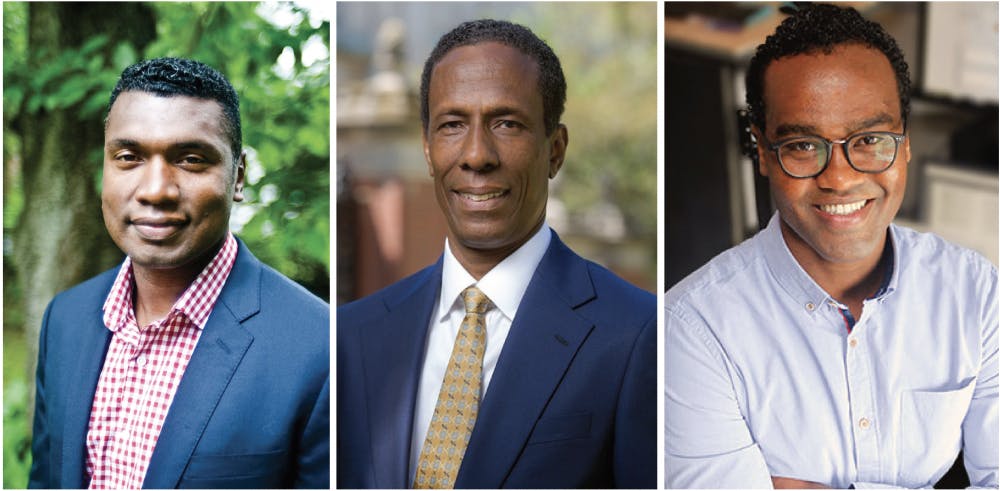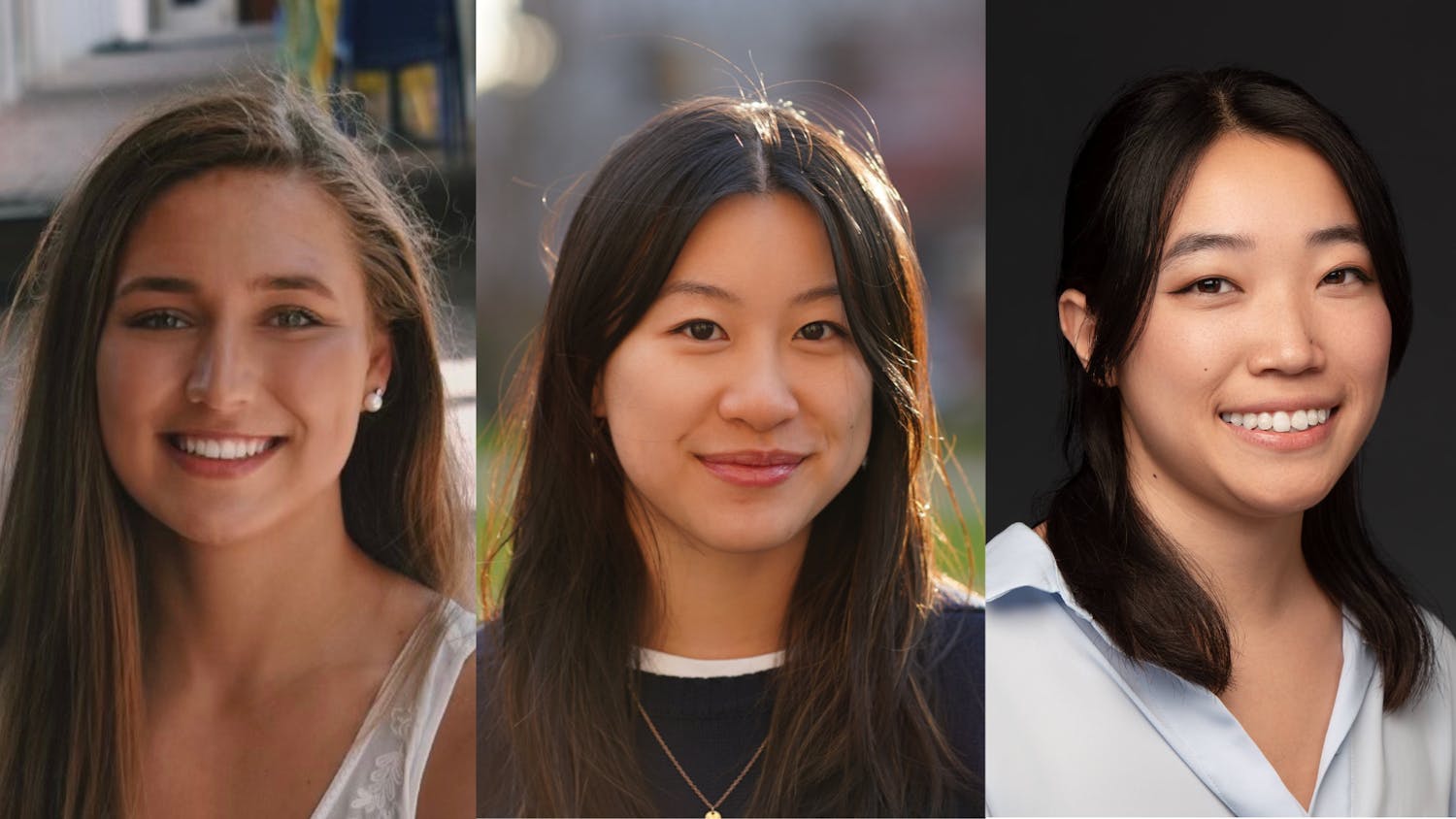Earlier this February, in honor of Black History Month, three University researchers were named to a list of “100 Inspiring Black Scientists in America” released by CellPress — the publisher of renowned research journals like Cell — through its blog CrossTalk.
With additional input from prominent faculty members across the country, Antentor O. Hinton Jr., a postdoctoral fellow at the University of Iowa; Zer Vue, a postdoctoral scholar at the University of California at San Francisco; and Haysetta Shuler from Winston-Salem State University compiled the list of scientists. The list is divided into two groups: 75 “established investigators” and 25 “rising stars.” To select the honorees, the team from CrossTalk chose Black researchers who were not just accomplished scientists but were also dedicated to mentoring and championing diversity.
Andrew Campbell: Prioritizing Neglected Diseases
Andrew Campbell, professor of medical science and dean of the Graduate School, was one of the University researchers featured as an established investigator in CrossTalk’s article. The focus of Campbell’s research is “studying and understanding what’s probably best described as neglected diseases of neglected populations of people. These include diseases affecting people in areas such as sub-Saharan Africa,” Campbell wrote in an email to The Herald.
Campbell was inspired to pursue this research because of his “concern for people faced with burdens on a daily basis brought on by diseases too few people prioritize or feel are important enough to eradicate or control.”
“Removing barriers and challenges that marginalized, under-represented and underserved individuals face is important to me. I see diversity work as work that creates and restores opportunities and access,” he added. “There are added responsibilities that come with being a person of color in science that are not shared with others. With those added responsibilities come added expectations that are real challenges. The same is true of women in science.”
Campbell specifically referenced George Washington Carver and Ernest Everett Just as Black scientists who inspired him, but both were from before his time. “The availability of the list of 100 says that today’s young Black scientists can find inspiration in individuals who are their generational contemporaries; They can pick up the phone, send an e-mail and communicate with the people who inspire them.”
Campbell encouraged students to reach out to the featured researchers and others whose work they look up to. “I personally know a lot of the people… on the list and know that they would be thrilled to hear from students and definitely would be receptive,” Campbell said.
Stephon Alexander: Expanding on Einstein
Another University researcher featured as a well-established investigator is Stephon Alexander PhD’00, professor of physics and affiliated faculty of Africana studies. As a theoretical physicist, Alexander tries to understand what happened to the universe before the Big Bang. Alexander and his team use techniques like machine learning to understand the nature of dark matter and dark energy — both complex, invisible entities.
In a recently published paper with collaborators in Italy, Alexander provided a theory that modified Einstein’s Theory of General Relativity in a step toward understanding dark energy. Alexander’s paper was published in the Physical Review, a top physics journal in which Einstein himself published his theory in 1935.
Einstein’s Theory of General Relativity guides patterns in our everyday lives. For example, the theory is used in GPS. “What Einstein’s theory fails to explain is dark energy in the universe,” so the researchers modified the equations that comprise the theory in order to better understand dark energy, Alexander added.
Alexander has also applied his expertise in physics and music in teaching the course PHYS 0150: “The Jazz of Modern Physics.” He believes that science comes from the same place as artistic and musical creativity.
Despite his success in the field, when Alexander was a postdoctoral researcher, he did not feel accepted by some of his peers. “There was a time … nobody wanted to talk to me … People assumed I got in (to the institution) because of affirmative action. I was really broken by that, but I had to move on.” But since Alexander was “passionate about and understood the world through the lens of physics, … (his) curiosity overcame messages from society that people like (himself) can’t do physics as well.”
“It is nice to be recognized,” Alexander said, referring to CrossTalk’s list, but he added that “the real recognition though is (achieving) my dreams to solve a major problem in physics, and I’m not there yet.”
Alexander advises other scientists of color to follow their passions, take control over their education and seek out mentors. “We should have a sense of perspective that there are many that came before that didn’t have this opportunity. We should never take that for granted.”
Arif Hamid: Investigating Decision Making
Arif Hamid, a postdoctoral fellow and Howard Hughes Medical Institute Hanna Gray Fellow, was labeled as one of 25 rising stars.
Hamid’s research is focused on the neural basis of decision-making and its clinical consequences and computer science application. He studies decision-making in the brain on many time scales. Larger time scales include lifelong goals while smaller ones include quicker decisions, like choosing to reach for a pen. Hamid is specifically interested in how these time scales are connected and which brain areas facilitate this process. Dopamine, a chemical messenger in the brain, is a factor partly responsible for this connection. An excess of dopamine in a specific region of the brain can have clinical effects, such as addiction and schizophrenia.
In a recent project, Hamid measured regions of the brain with large amounts of dopamine and examined the effects that this had on decision-making on the different time scales. His work led him to the discovery that dopamine activity, which is determined from the activation of the brain regions, happens in wave patterns, or dopamine waves. His next goal is to further study what the wave patterns entail in regards to the behavior and operation of neural circuits.
As a Howard Hughes Medical Fellow, Hamid works with other fellows and scientists to facilitate trainings and networking opportunities with senior scientists. In the potentially unstructured postdoctoral process, “mentorship becomes (especially) important. Making sure you succeed is not trivial,” he said.
Hamid considers himself lucky because of the support he has received from his mentors. “Part of your success is feeling like you belong and your opinions matter and that you are a valuable part of the community … Getting advice on how to succeed can become difficult if you are already feeling isolated.”
“I feel very humbled” to be featured on the list, Hamid added. “I am in the category of rising star, so hopefully I can live up to that.”
Hamid had interacted with some of the other scientists on the list through the Hughes fellowship and said, “You kind of see yourself in them and recognize that you can also pursue what you want, and I think that is a really powerful message to have.”
To spread the word about the distinction, the list’s organizers reached out to scientist Twitter influencers with large platforms, asking them to retweet the list. “We’re hoping to spread the award … showing (minority scientists) that they are not the only ones in science that look like them,” Hinton said.
With the media attention following this list, CellPress has agreed to create a European Black History Month post in October and an equivalent list of scientists for Hispanic Heritage Month, he added.
“Having diversity in STEM is a blessing that should not be looked at as cumbersome,” Hinton said. “Everyone should be an advocate for diversity.”





